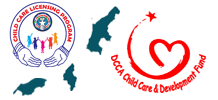The following table displays over 3 years of monitoring data relative to serious injuries, deaths, and substantiated child abuse in the child care setting.
What do serious injury, death, and substantiated child abuse in the child care setting mean?
- Serious injury in child care setting defined – is an injury to a child or staff member that requires emergency medical attention by a health care professional or admission to a hospital.
- Death in child care setting defined – is death of a child or a staff member as a result of an accident, suicide, assault, or any natural cause while at the facility, or while on authorized or unauthorized leave from the facility.
- Substantiated child abuse in child care setting defined – is any physical or sexual abuse, neglect, or maltreatment that was investigated and found to be true.
Please note that within 24 hours, excluding weekends and holidays, of the occurrence of a critical incident at the facility, the Director or its Designee must report in writing to the Child Care Licensing Program the above critical incidents involving a child in the care of the facility or a staff member on duty at the time. NMIAC §55-40.1-125.
What does this information mean?
The above table shows the total number of children in care for the given year, the annual number of serious injuries, deaths, and instances of substantiated child abuse that had occurred in the child care setting throughout the Commonwealth of the Northern Mariana Islands (“CNMI”).
The Child Care Licensing Program’s mission is to ensure the health, safety, and well-being of all children in care by establishing rules, regulations, and policies for the licensing and operation of child care facilities within the CNMI. However, children are naturally curious about their environment and so they sometimes get hurt. Additionally, child care providers sometimes make mistakes and unknowingly or knowingly violate the rules and regulations, which may result in child injury. To minimize the occurrence of injuries, deaths, and instances of substantiated child abuse, a fair and consistent inspections of all child care facilities, conducted by trusted, knowledgeable and professional Health and Safety Inspectors must take place. Afterall, preventive and corrective strategies are a hallmark of an excellent licensing program.
How does the Child Care Licensing Program obtain such information?
All licensed child care providers in the CNMI are required to report any critical incident that occurs in the facility pursuant to NMIAC §55-40.1-125.
What type of child care does this information apply to?
Part 200 – Day Care Center, Before and After School Programs: This classification of care may provide care to children aged two years (twenty-four months) and older. NMIAC §55-40.1-202.
Part 300 – Family Child Care Homes: This classification of care shall provide care for no more than six children at the same time. NMIAC §55-40.1-301(a).
Part 400 – Infant and Toddler Child Care Centers: This classification of care shall provide care to children age six weeks and under 24 months. NMIAC §55-40.1-401.
License-Exempt Child Care Provider – This classification of care can operate legally without a license. Under the Child Care and Development Fund, “License-Exempt Care” means child care to less than 5 children which is exempt from licensure pursuant to CNMI law and the current state plan and is registered by the Child Care Program. NMIAC §55-60-005(bb).

